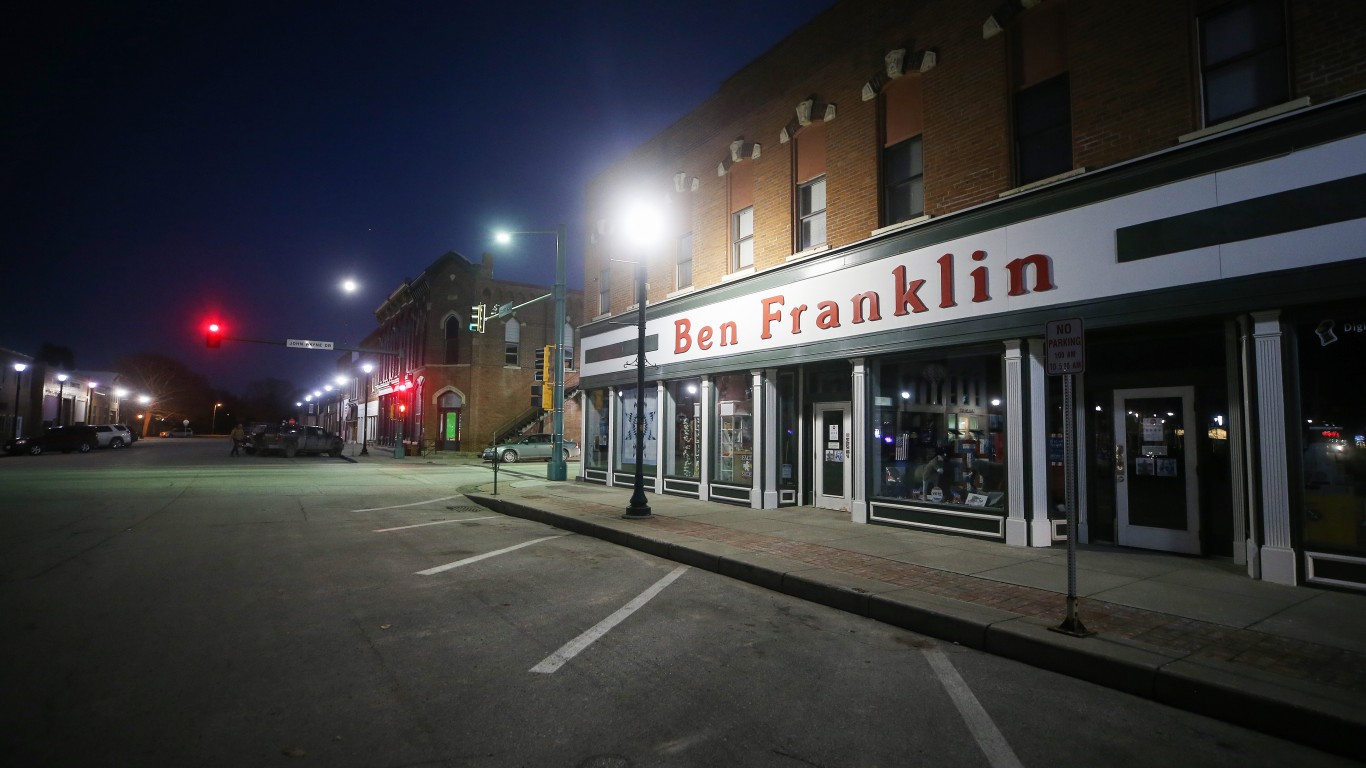Health and Healthcare
COVID-19: This Is the Deadliest Place in America

Published:

The spread of COVID-19 has begun to slow across the United States. After weeks of increases in confirmed cases of over 200,000 a day, that number has dropped nearly in half. Currently, total confirmed cases number 27,319,269 in America, which is about 25% of the world’s total. The fatal case count in the United States is 468,679, or nearly 20% of the world’s total. Experts worry new variants and slow vaccination rates would take the number of fatal as high as 600,000 by summer.
The traditional ways to measure the spread of the disease are by confirmed cases, fatal cases and hospitalizations. Another yardstick is cases and deaths per 100,000 people. This allows for apples-to-apple comparisons from state to state and county to county. On this basis, there is a very broad spread from place to place across the country.
The county with the highest death rate per 100,000 people based on a 14-day average as of February 7 is O’Brien County, Iowa, where the figure is 29.27, well above any other county in the country. According to the U.S. Census, O’Brien County had 13,753 residents as of July 1, 2019. Almost 92% of the population in the county is white. Another 5% is Hispanic.
O’Brien County sits northeast of Sioux City and southeast of Sioux Falls. Its median household income of $53,703 is well below the national average. The number of people there who live in poverty is 10.1% of the total, which is close to the nationwide figure.
Next on the list of counties with the most deaths per 100,000 averaged over the past 14 days is Bath, Virginia, at 13.01. Its population is 4,393. It is followed by Foard County, Texas, at 10.15. Foard County’s population is 1,408. The next county based on the measure is Rosebud County, Montana, at 10.04. It has a population of 9,250. It is followed by Van Buren County, Tennessee, at 10.02, which has a population of 5,704.
The list of counties with the highest death rates per 100,000 based on the 14-day average shows how widespread the problem in the United States.
Another means to measure the spread of the disease is cases per 100,000 people over a 14-day average. This list is led by Wilson County, Kansas, with a figure of 546.70. Its population is 8,780. It is followed by Thomas County, Kansas, at 485.69. Its population is 7,824. The two Kansas counties are almost 400 miles apart.
Next on the list by this metric, the number in Pike County, Georgia, is 423.86. Its population is 18,082. It is followed by Pierce County, Georgia, at 421.55 and with a population of 19,164. The two Georgia counties are about 200 miles from one another. Finally, Nemaha County, Kansas, has a figure of 420.63 and some 10,104 residents.
The one factor all these counties have in common is that they have low population counts and are sparsely populated. It is another example that the worst of the COVID-19 disaster is not just in large cities.
Click here to see the worst hotspot in America.
Click here to see the state with the highest number of COVID-19 cases.
After two decades of reviewing financial products I haven’t seen anything like this. Credit card companies are at war, handing out free rewards and benefits to win the best customers.
A good cash back card can be worth thousands of dollars a year in free money, not to mention other perks like travel, insurance, and access to fancy lounges.
Our top pick today pays up to 5% cash back, a $200 bonus on top, and $0 annual fee. Click here to apply before they stop offering rewards this generous.
Flywheel Publishing has partnered with CardRatings for our coverage of credit card products. Flywheel Publishing and CardRatings may receive a commission from card issuers.
Thank you for reading! Have some feedback for us?
Contact the 24/7 Wall St. editorial team.